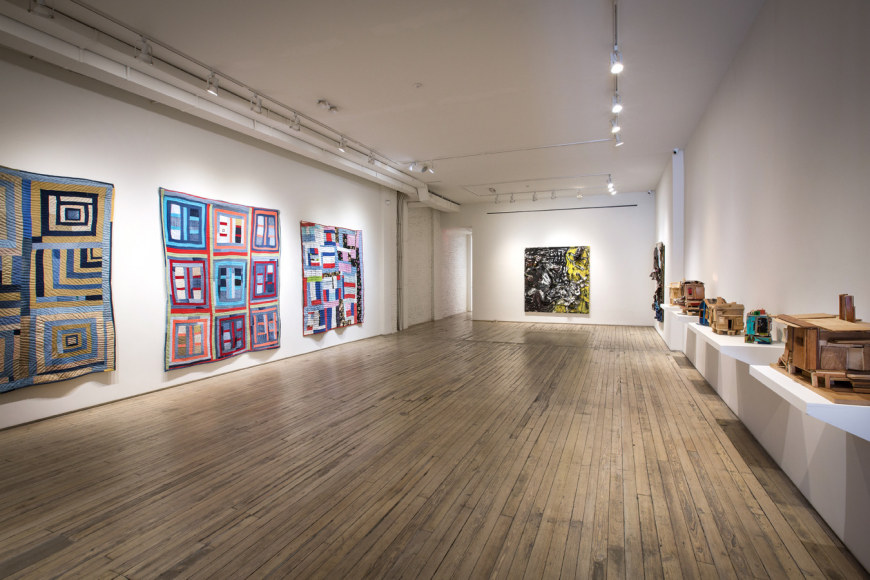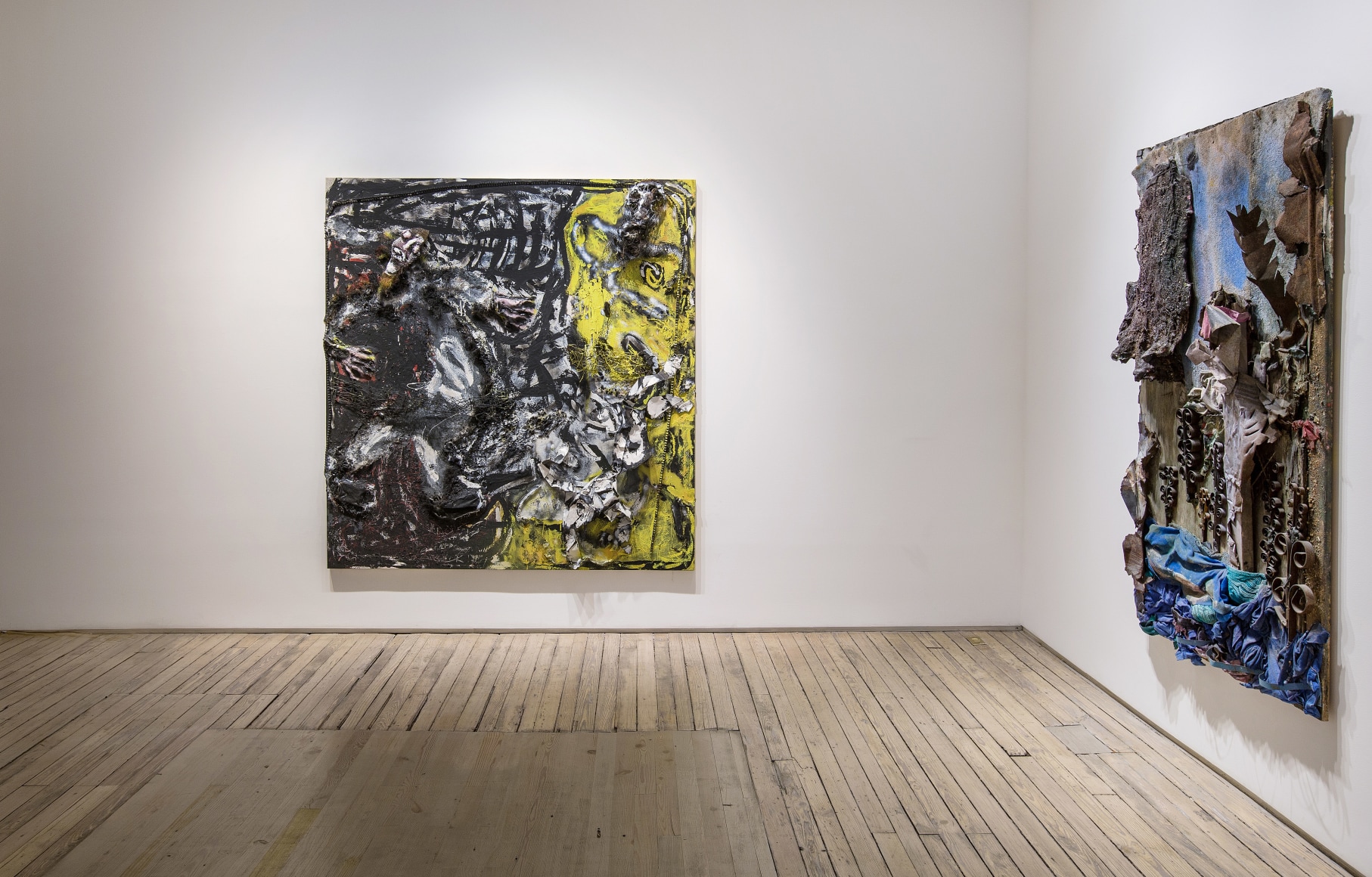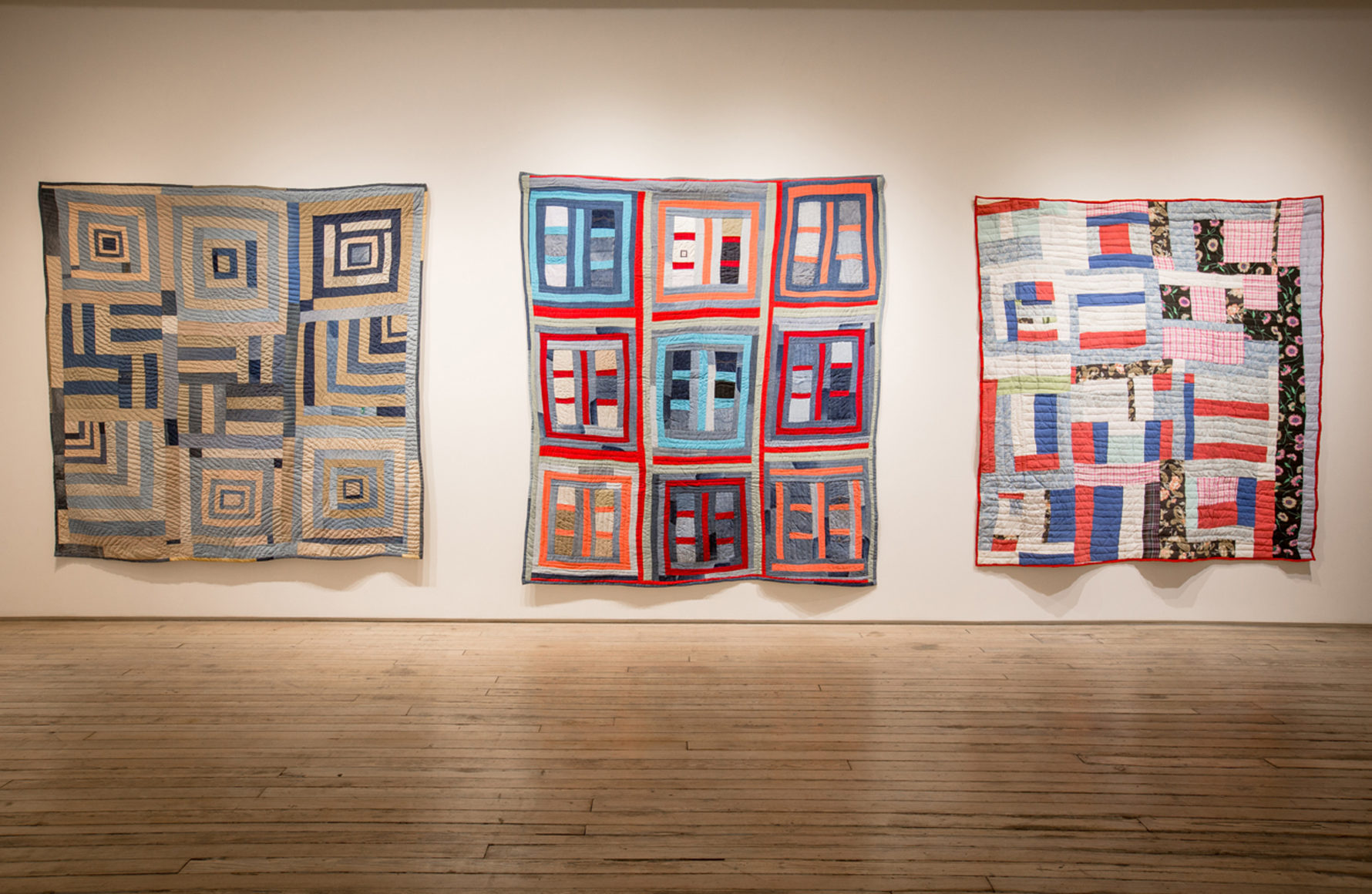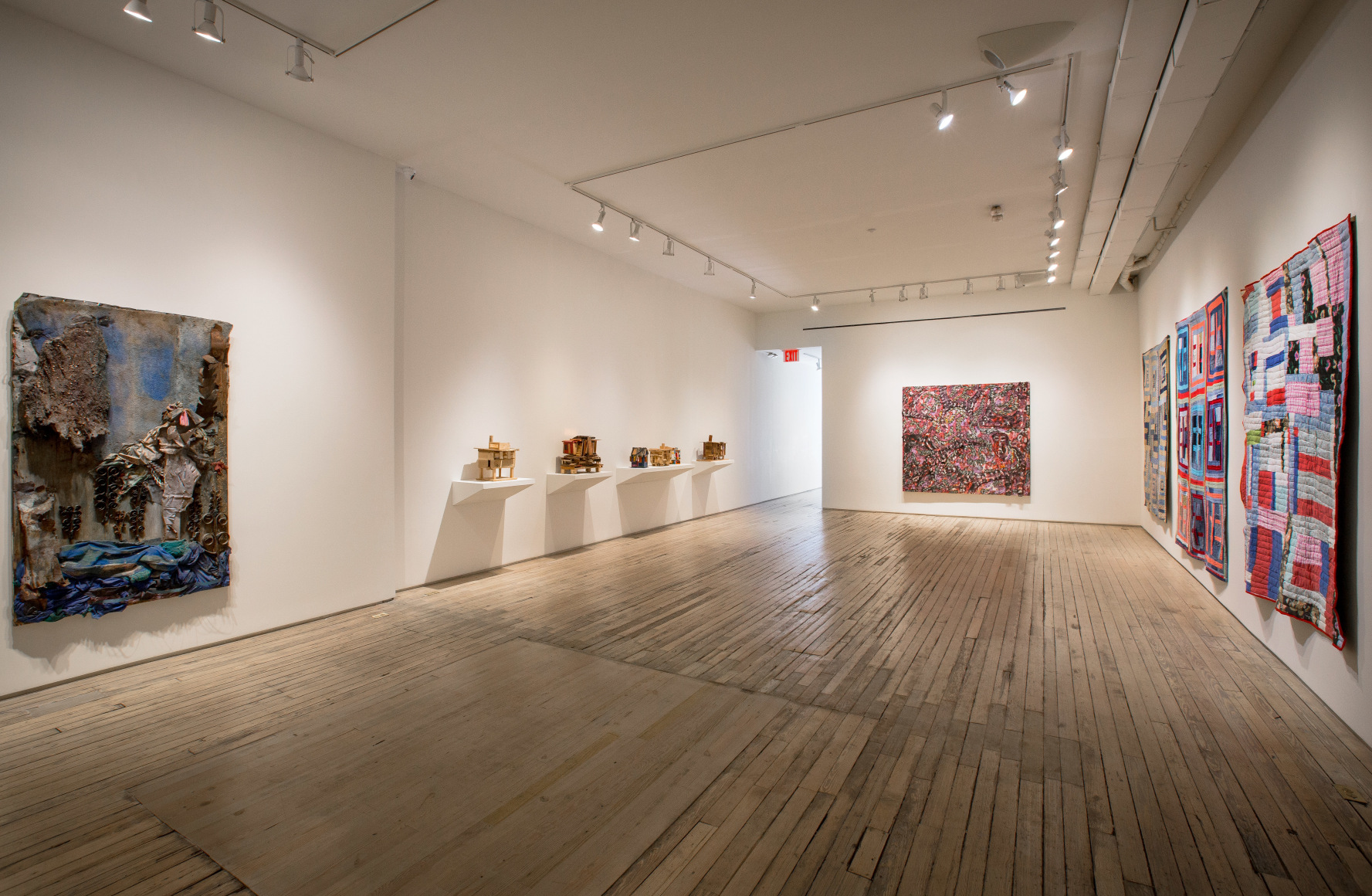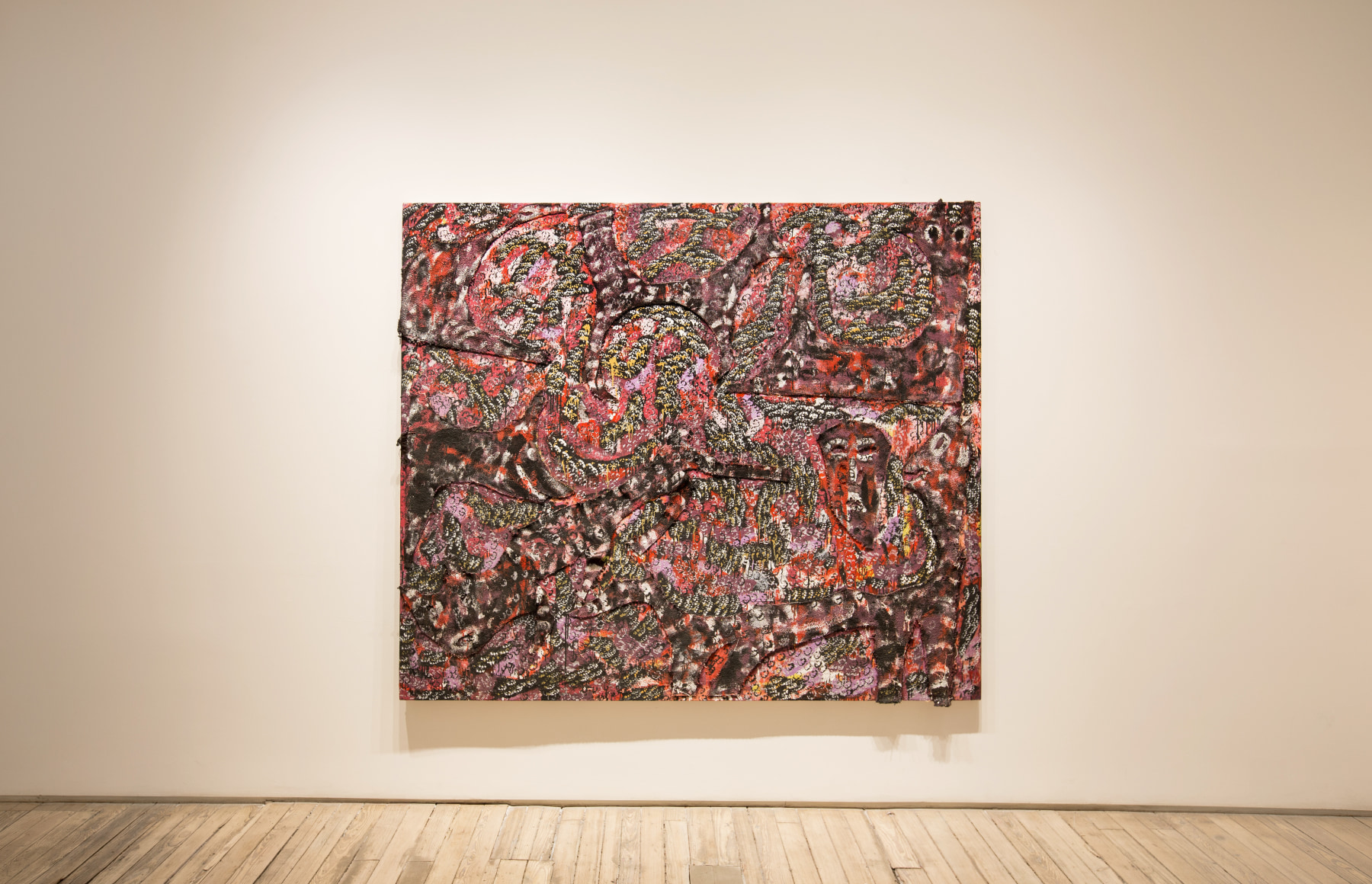Beverly Buchanan (1940-2015) once remarked, « A lot of my pieces have the word ‘ruins’ in their titles because I think that tells you this object has been through a lot and survived — that’s the idea behind the sculptures … it’s like, ‘Here I am; I’m still here!’” The artist grew up in South Carolina and spent much of her life traveling the rural South. Buchanan uses wood scraps or sometimes foamcore to build her “shacks.” Whether inhabited or abandoned, her structures are meant to embody the spirit of those who lived there, what she referred to as “emotional groundings.”
Thornton Dial’s 1993 assemblage, Looking Good for the Price, is one of his most seminal and literally hard-hitting works of art. Raw from the condescending and humiliating depiction of him by Morley Safer on the now infamous 60 Minutes episode, Dial turned to the analogy of a slave auction to express his feelings of debasement. Echoing the violence perpetrated on African-Americans by white people, Dial smashed the figures on the piece’s surface with a sledgehammer.
In 2001, Dial (1928-2016) met the women quiltmakers of Gee’s Bend, Alabama through Bill Arnett, who along with his sons Paul and Matt, had been passionately collecting and documenting their works since 1997. This exhibition includes quilts by Lucy Mingo (b. 1931), Rita Mae Pettway (b. 1941) and Mary Lee Bendolph (b. 1935). In the long history of American quilters, those from Gee’s Bend are distinctive for their spontaneity and geometric elegance, stemming in part from the isolation of their community as well as their reworking of materials, which sometimes included the clothing of deceased relatives.
These artists offer a broad range of perspectives, from the deeply personal to the ideological, on what life was like in the Southern United States for African Americans during the twentieth century. Subject to the rigid laws of segregation, they witnessed firsthand both the struggles and victories of the Civil Rights Movement. The conditions that influenced these artists cannot be replicated, and the importance of their art has become more widely acknowledged.
The art of Beverly Buchanan, Thornton Dial and the Gee’s Bend Quiltmakers are all held in numerous museum collections including The Whitney Museum of American Art (New York), the High Museum of Art (Atlanta) and The Metropolitan Museum of Art (New York), where the current exhibition, History Refused to Die, which features Dial and the Gee’s Bend artists, will be on view through September 23, 2018. Gee’s Bend quilts are also included in the National Gallery of Art’s (Washington DC) traveling exhibition Outliers and American Vanguard Art, on view at the High Museum of Art (June 24 - September 30, 2018) and the Los Angeles County Museum of Art (November 18, 2018 - March 18, 2019). Ruins and Rituals, a recent survey of Beverly Buchanan’s art at the Brooklyn Museum, traveled to Spelman College Museum of Fine Art, Atlanta, where it concluded in December, 2017.

